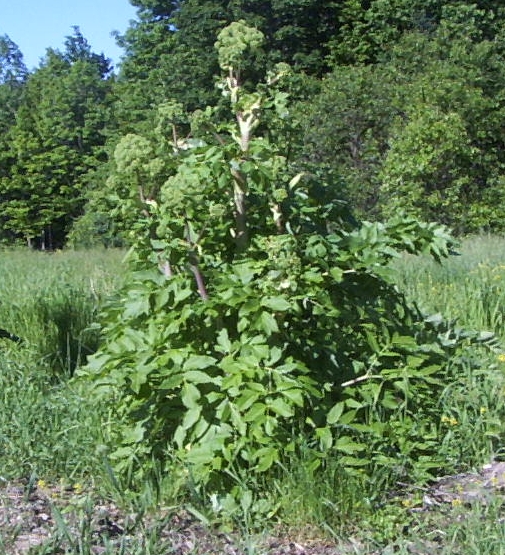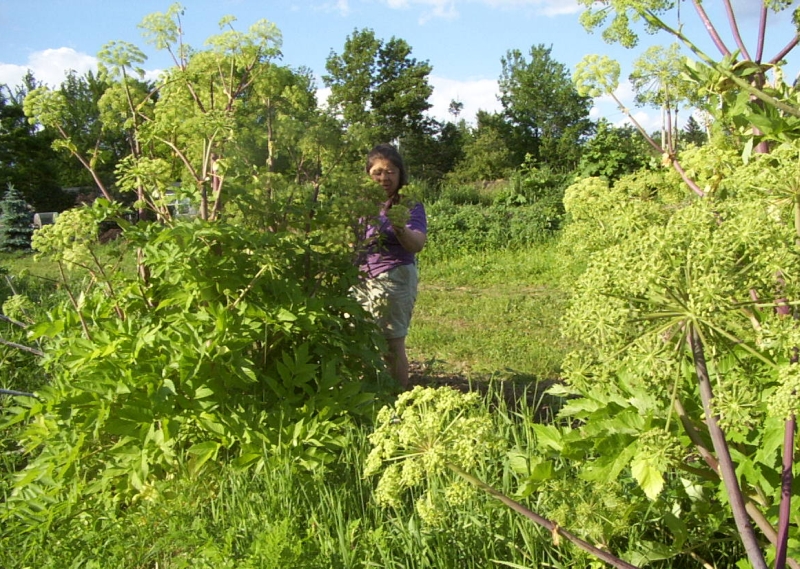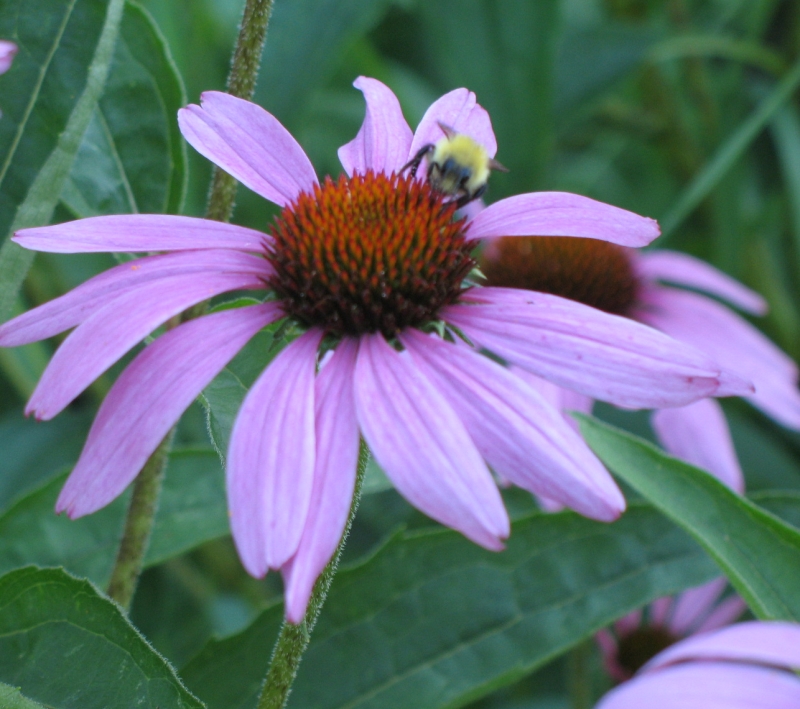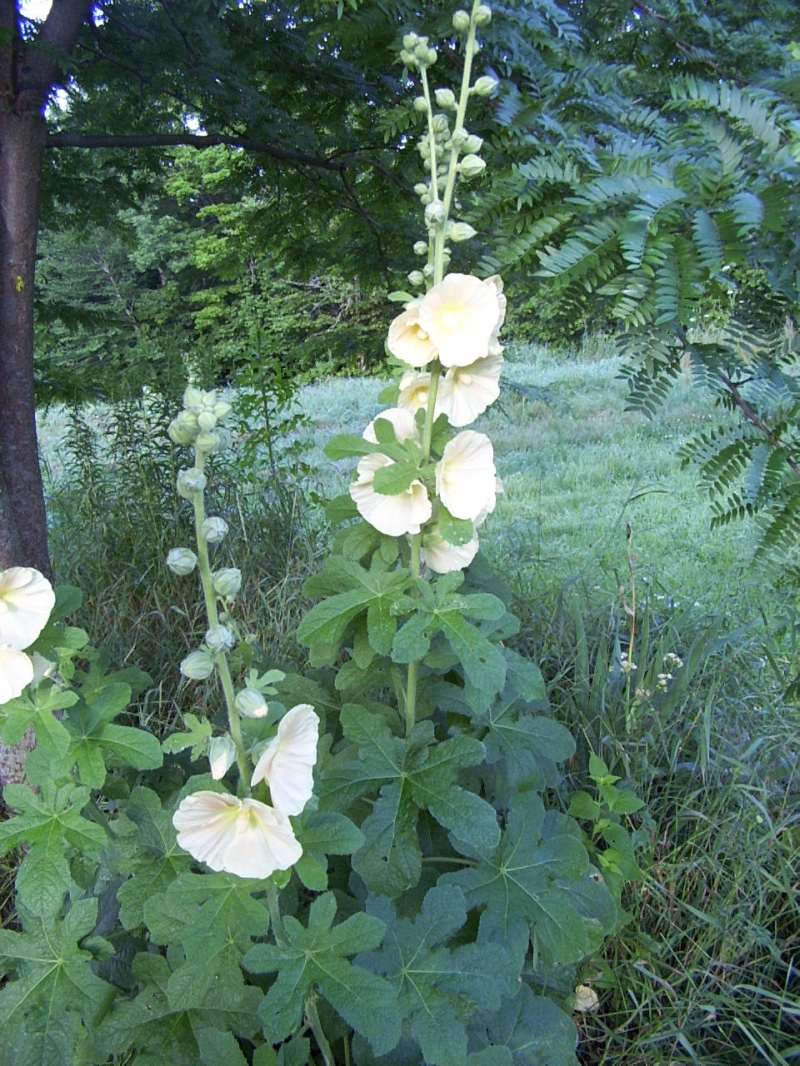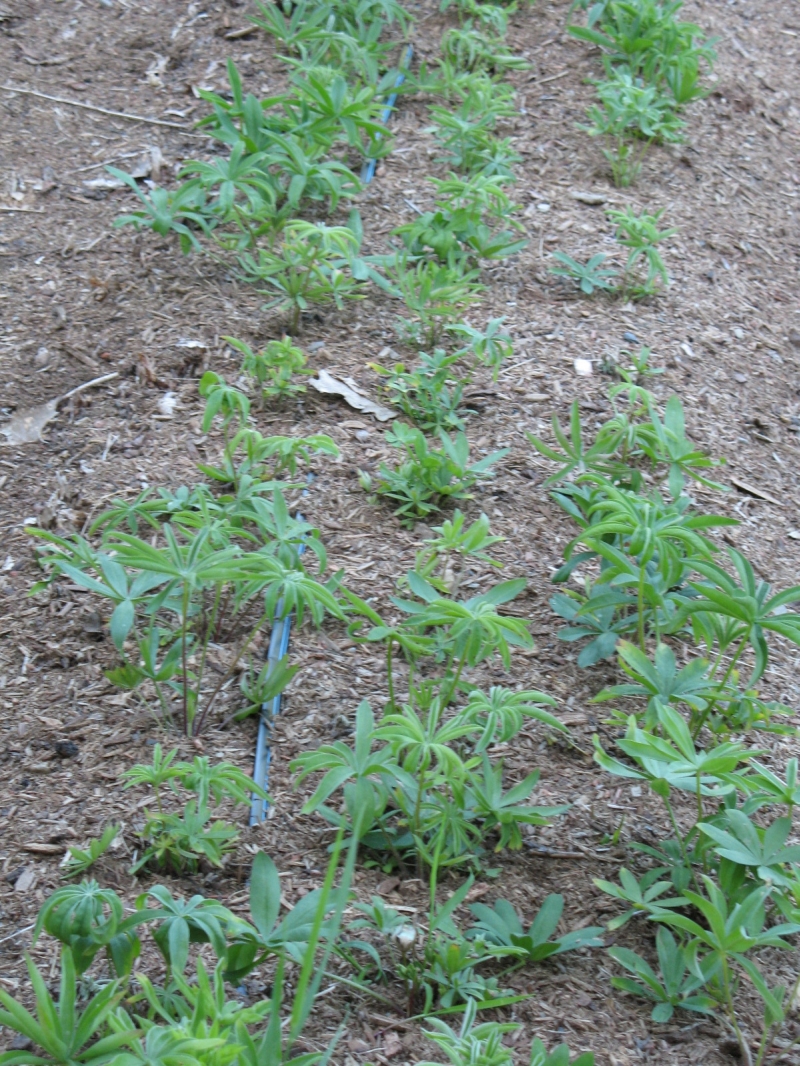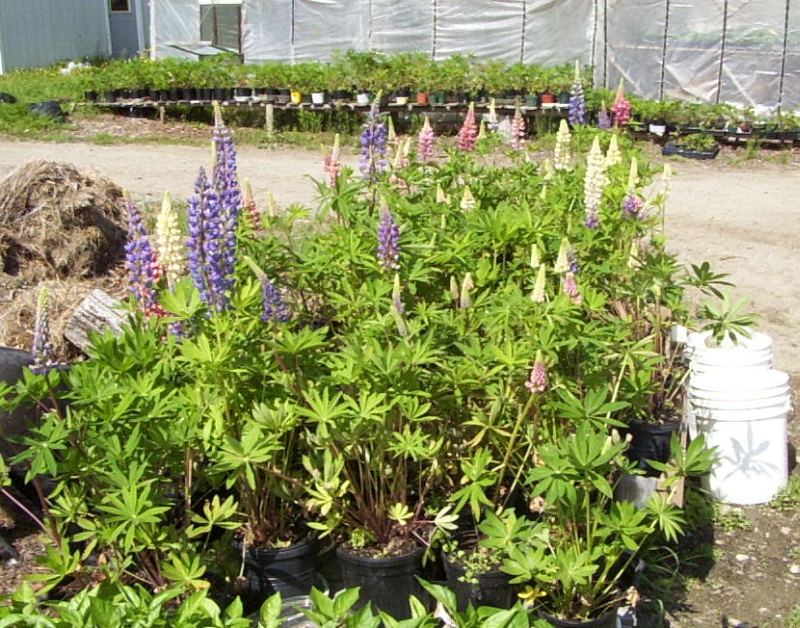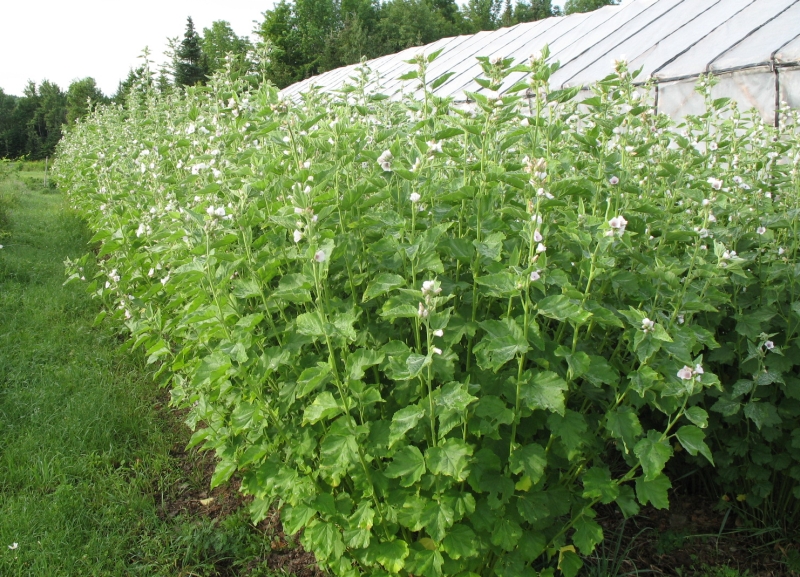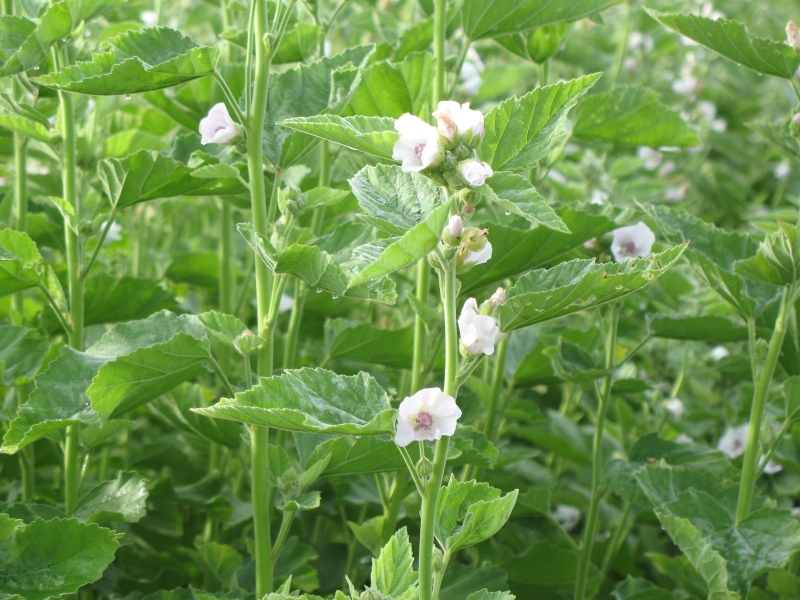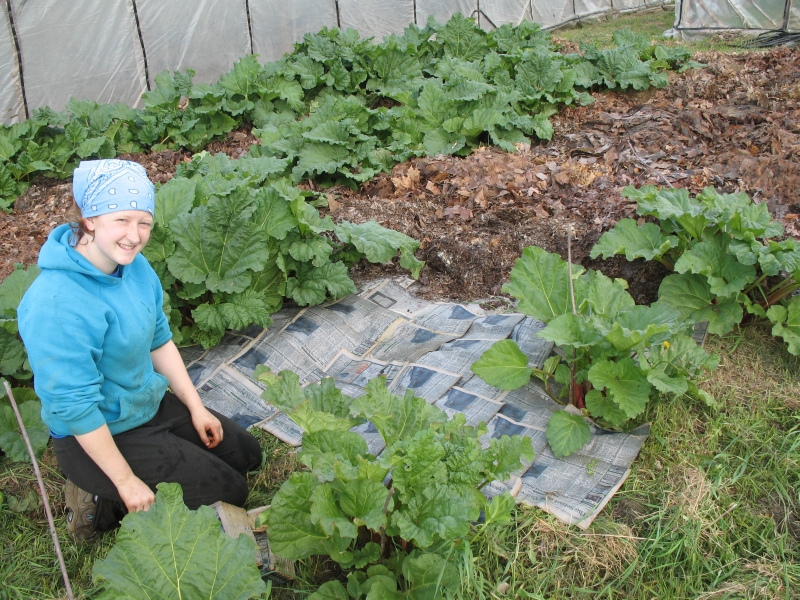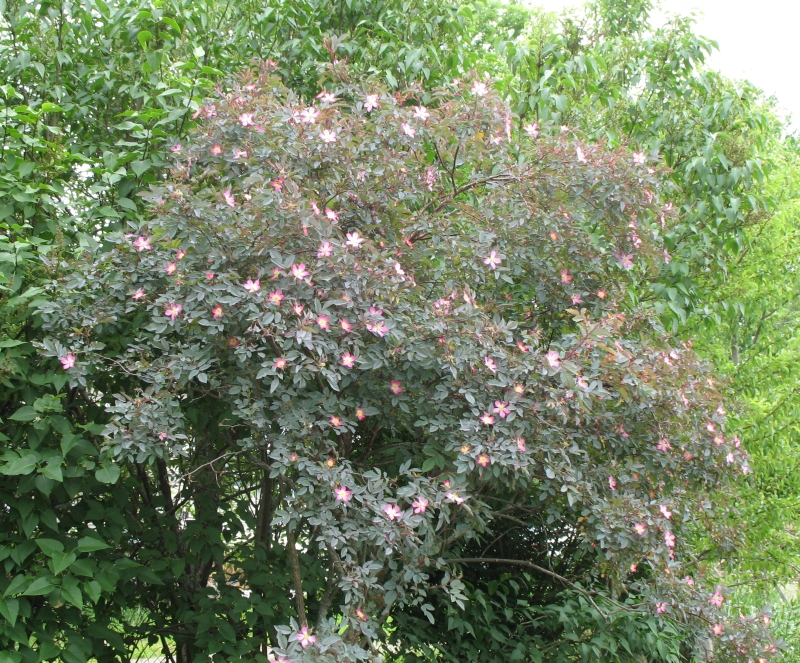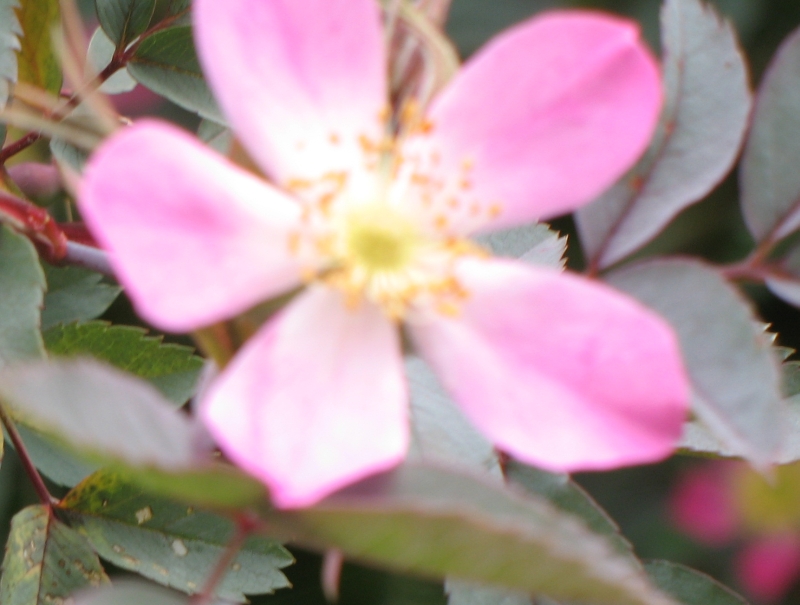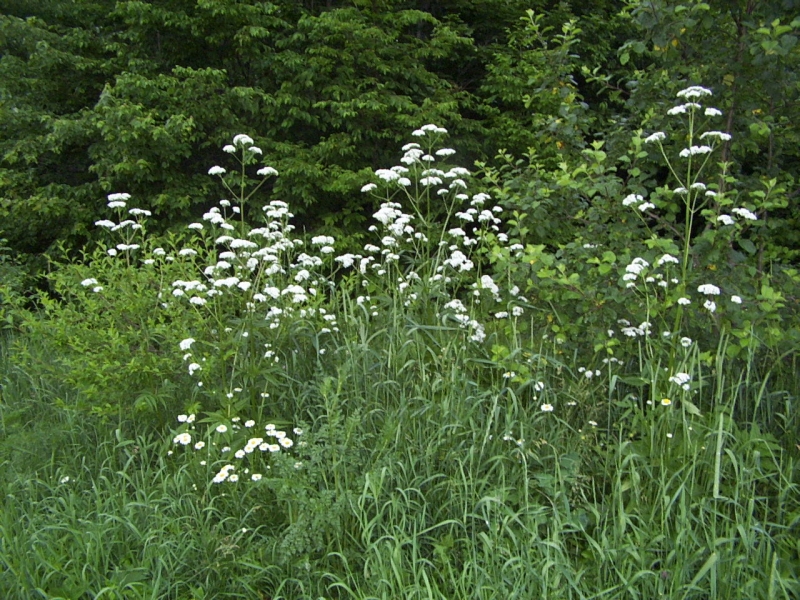Perennials~ Beauty for our yard ~ |
|
Click on photos to enlarge. |
|
|
|
Echinacea, purple cone flower. We grow Echinacea Purpurea the variety most commonly used for echinacea tincture. Attracts bees, especially bumblebees, and re-seeds itself. Root may be dug when sizable enough—usually after 4-5 years—to make echinacea tincture. |
|
Hollyhock, lemon yellow flowers. Related to marshmallow, hollyhock begins flowering it’s second year. Flowering Hollyhocks are about 5-6 feet tall. |
|
Lupines, multi-colored flowers from the Russell Strain. Blooms from early June to early July in one foot flower spikes on 2-4 foot stalks. During blossoming season we offer blooming lupines in pots (left photo). These one year old plants are dug from our lupine nursery (top photo) in late April and will continue to blossom for up to ten years, each year producing seeds to expand the patch. Lupines seedlings begin to blossom starting the second year. Spring potted second year lupines ready to go to market (bottom photo). More info and more photos of our lupines here. |
|
Marshmallow, white flowers. Related to Hollyhock, the flowers are similar but smaller, and the plant is just as tall, about 5-6 feet. Although nowadays marshmallow flavoring is synthetically produced, originally the flavor came from the long white roots of four-or-more-year-old plants. Marshmallow is very hardy, and although the tops entirely die back every year, the next year’s plants will reliably emerge in mid May. Several stalks arise from each root; the picture below is of a single row of plants. |
|
Rhubarb Plants, May through November, although during the height of the summer season we only bring them to market upon request. These are two year old rhubarb plants started from seeds from our own rhubarb patch. Although rhubarb can be planted from our pots into your garden any time of year, spring and fall transplantings will allow the rhubarb to acclimate better. You should be able to begin harvesting rhubarb stalks when they are a half inch wide, which should be beginning about two years after you plant your patch. Although a single rhubarb plant will do just fine, having several allows you to harvest all you want for pies, sauces and freezing. |
|
Red Leaf Rose, pink flowers with single row of petals. Self-supporting vase-shaped bush grows to ten feet tall. Bush at left is eight years old and is slightly smaller than the lilac behind it. |
|
Tansy, clusters of yellow button-like flowers from July to frost. 3-4 feet tall. Very hardy, often planted around foundations as decoration and to repel ants. Top entirely dies back in fall, to re-sprout in the spring. Tops may be cut in fall and left piled where a new tansy patch is desired. Slowly spreads via rhizomes. Will grow in little more than gravel, but also appreciates a good soil and at least a little sun. More information on Tansy here. |
|
Valerian, white flowers from July to August. Plants grow 5-6 feet tall. Flowers smell like chocolate. Valerian is very invasive, and once you have one blossoming, you will see others next year anywhere in the yard. To stop this, cut off flowers as soon as they finish blossoming. Blossoms begin the second year. |
